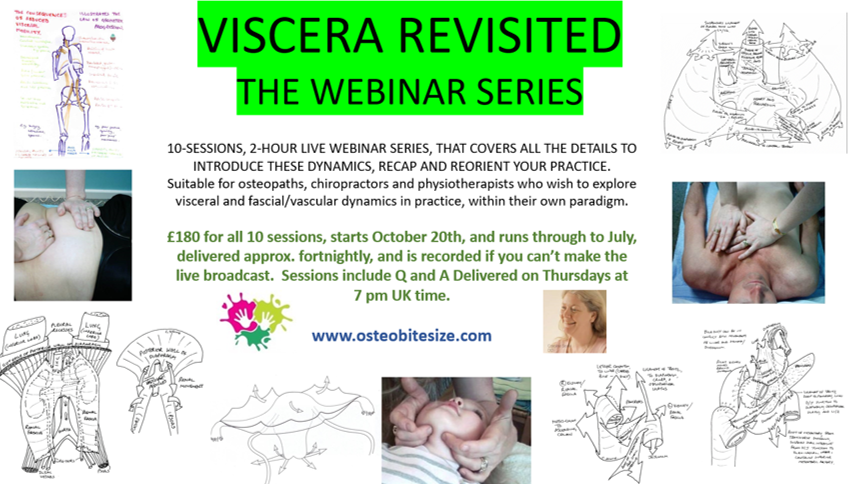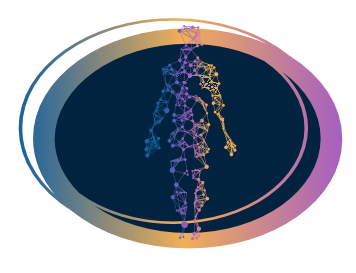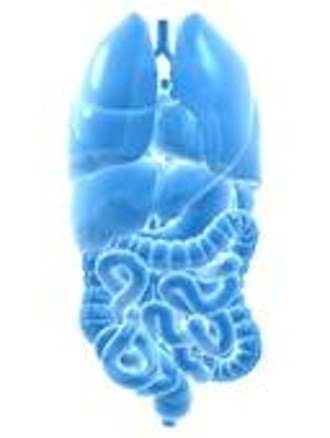VISCERA REVISITED
WITH CAROLINE STONE D.O.(Hons), MSc(Ost), MEd, MClinEd
GET BACK TO THE BASICS OF ANATOMY, PHYSIOLOGY AND TECHNIQUE, AND LEARN HOW TO REALLY APPLY THINGS IN YOUR PRACTICE. (Please note, this course will be your gateway into the 2 other larger courses that Caroline offers on visceral work and osteopathic medicine - namely the 'Visceral Basics' and the 'Global Visceral' Series).
Go beyond your undergraduate experience and get insights into clinical applied approaches.
10-SESSIONS, 2-HOUR LIVE WEBINAR SERIES, THAT COVERS ALL THE DETAILS TO INTRODUCE THESE DYNAMICS, RECAP AND REORIENT YOUR PRACTICE.
Suitable for osteopaths, chiropractors and physiotherapists who wish to explore visceral and fascial/vascular dynamics in practice, within their own paradigm.
LEARN FROM ONE OF THE WORLD’S BEST-KNOWN ‘VISCERAL OSTEOPATHIC TEACHERS’
£180 for all 10 sessions, starts October, and runs through to July, delivered approx. fortnightly, and is recorded if you can’t make the live broadcast. Sessions include Q and A with Caroline. Delivered on Thursdays at 7pm UK time.
Session dates:
- 20 Oct 2022
- 17 Nov
- 15 Dec
- 19 Jan 2023
- 2 March
- 23 March
- 4 May
- 1 June
- 29 June
- 6 July
Session topics:
- What is ‘visceral’? – why ‘techniques’ are not enough in practice. Understanding the body cavities, and their role in motor planning and interoception
- Layers and sliding surfaces in the abdomen – working through the muscles, fluids and organs, basic locations and what hinders palpation and what really can be identified
- Upper gastrointestinal dynamics
- Lower digestive tract dynamics
- Retroperitoneal organs, including renal and endocrine systems
- Endocrine immune systems continued
- Cardiorespiratory dynamics
- Visceral-vascular considerations
- The global pelvis – male and female
- Neural systems and the autonomics relevant for visceral dynamics
From this programme you will get:
Anatomy review, taking you from a beginner to a higher level of knowledge
Understanding the link between body movement and fascial dynamics with visceral function and interoception
Understanding the complexities of working with the viscera and peritoneal and other serous structures of the torso
Understanding how the body cavities work, how pressure dynamics are relevant
Focused awareness of the different visceral systems: upper digestive tract; lower digestive tract; upper urinary tract and retroperitoneal dynamics; lower urinary tract, and uro-genital dynamics, male and female; endocrine immune systems; vascular systems; neural systems including the autonomics and the CNS;
The course will discuss hands-on approaches and review a range of techniques and palpatory dynamics.
This course sets you on a strong learning path for taking advanced courses once you are more confident!
This course is delivered over zoom. You will get access to the recording afterwards. If the course does not appear in your 'my courses' section, please don't worry, we will be in touch via email to organise links / access.

This course really builds on the visceral basics - getting you to understand many aspects of visceral pain, vagal dynamics, mindfulness, breathing, body mapping and problems with scars and adhesions. It helps you appreciate all the adjuncts and approaches necessary when dealing with a variety of visceral dynamics and begins to illustrate how to approach some visceral conditions . help in their management. It goes into many aspects of the osteopathic medicine approach, looks at potential for healthcare contribution across a range of healthcare presentations, and despite the fact that osteopaths 'look for health, not disease' it is still vital to understand the science behind complex health challenges and how physiology and homeostasis, movement and anatomy all converge to enable the person to function at their best.
CONTENTS IN DETAIL:
This course contains a series of 34 modules; the content of each module is outlined below:
Module 1: Osteopathic Medicine
This module consists of 2 videos; video 1 is 1 hour 22min , video 2 is 1 hour 30 min.
plus:
- 2 articles for study & reflection
Module 2: Fluid versus neural circuitry - more comments about 'CHEMICAL' BARRIERS
This module contains 3 videos with a total viewing time of approximately 1 hour 50 min
plus:
- 2 links to articles for further reading
Module 3: Wider perspectives!
This module contains 2 videos with a total viewing time of approximately 2 hours.
Module 4: Exchange and metabolism - cardiorespiratory interface, breathing and airflow and dynamics of arousal / sleep
This module consists of three lectures; lecture 1 is on the Upper airway spaces (3 hours), lecture 2 is on the lower respiratory tract, the cardiorespiratory interface and the metabolism with respiration and exchange( 2 hours 44min), lecture 3 is on the Vagus & sympathetic & parasympathetic integration (2 hours 48 min). In addition, there is one technique video (3 min 21 sec) plus 5 supplementary videos with a total viewing time of approximately 45 min.
plus:
- downloadable handouts for lectures 1, 2 & 3 (notes & 30+ links for further reading) and an online viewable slideshow of all the powerpoint slides of each lecture
Module 5: Behavioural state regulation, arousal and sleep
This module consists of 2 lectures; Lecture 1: Arousal and State Regulation is 2 hours 33 min & lecture 2 : Infant behavioural states / States of Consciousness is 2 hour 22min.
Module 6: Nutrition, digestion, assimilation, microbiome
This module consists of 2 videos with a total viewing time of 1 hour 5 min.
Module 7: Metabolic Load and pro-inflammatory State
This module contains 1 link for supplementary reading.
Module 8: More on NEURAL BARRIERS
A module containing a 1 hour 12 min video on visceral pain
plus:
- 4 links to articles and resources for further reading
Module 9: Visceral communication, visceral pain signalling, adjusting visceral function to demands of the whole
This module contains a lecture of 1 hour 47 min in addition to 3 supplementary videos of 15 min, 30 min and 1 hour 40 min.
plus:
- 4 links to articles and resources for further reading
Module 10: The endocrine system and the immune system
This module contains 3 videos with a total viewing time of approximately 2 hours (including one technique video)
plus:
- one link to resource for further reading
Module 11: Neuroendocrine immune interactions including the HPA axis
A module containing 2 videos of I hour and 16 min.
plus:
- 2 links to articles for further reading
Module 12: Interoception, proprioception and exteroception - the developing and internal self through interchanges with the outside world
This module consists of a 3 part lecture: part 1: 33 min, part 2: 1 hour 37 min, part 3: 1 hour 24 min.
plus:
- one link to resource for further reading
Module 13: Stress, the viscera, disease and systemic dysfunction
This module contains no lectures. However there are 9 links to resources for study and reflection.
Module 14: Social Engagement, polyvagal theory, and conflicts within the system-understanding Vagal Tone
This module contains 1 video of 28 min
plus:
- 3 links to articles for further reading
Module 15: Emotions, safety, trauma, stress, chronic illness, pain
This module consists of a 31 min video on the Immune system and Stress plus a recording of a Q&A session on Somatic experiencing and bodywork-1 hour 35 min.
plus:
- 4 links to resources for further reading
Module 16: General Adaption Syndrome and Allostasis, central sensitisation and nervous 'irritability'
This module contains 2 videos of 35 min & 45 min.
plus:
- 1 link to follow for supplementary reading
Module 17: Gerontology and the ageing process
This module contains a 9 min video
plus:
- 2 links to articles for further reading
Module 18: Touch
This module contains a 3 min video
plus:
- 2 links to articles for further reading
Module 19: On scars and skin - our outer layers and their function
This module contains 3 videos with a total viewing time of approximately 50 min.
plus:
- 7 links to extra resources for further reading
Module 20: Co-regulation and manual therapy - including the role of the therapist
This module consists of 4 videos, 2 of which are short (less than 5 min each) and 2 much longer ones of 1 hour 54 min & 1 hour 4 min.
plus:
- a link to an interview on regulation and the polyvagal story.
Module 21: Osteopathy as somato-physiological bodywork
Module 22: How I approach examination and assessment
Module 23: Body scan and 3D assessment
Module 24: 'Physiological' care plans - So, which visceral 'disease' were we talking about?
Module 25: Breathing dysfunction, asthma, other respiratory conditions
This module contains a video talk of 1 hour 30 min
plus:
- 1 link to an article for further reading
Module 26: Dyssynergia - eg bladder, bowel, diaphragmatic, abdominal....
This module contains a link to one resource for further reading
Module 27: Irritable bowel, functional lower GIT disorders
Module 28: Upper GIT conditions
Module 29: Liver and small intestine
Module 30:The urinary system
Module 31: Male pelvic health
Module 32: Female pelvic heath
Module 33: Coccyx and rectum
Module 34:Organs and senses in the head - EENT
This module contains a 22 min short video on balance and sensory integration.

- Teacher: Caroline Stone
LEARN ABOUT VISCERAL OSTEOPATHY, VISCERAL TECHNIQUES, CONCEPTS OF HOW THE BODY CAVITIES WORK, HOW DYSFUNCTION CAN OCCUR AND WHAT WE CAN DO ABOUT IT. Lots of evidence and applied anatomy to illustrate physiological and fluidic concepts as well as the relationships between the musculoskeletal system and the viscera (including the fascia and connective tissues of the body and body cavities). There are lots of technique videos included in this cpd course - and although technique competence can't be achieved, you can appreciate the approaches, and perhaps come on one of the technique intensive courses (when covid allows).
From embryology, through anatomy, visceral location and palpation - this is a great place to start if you did not get a visceral education. Also, if you did have one, and didn't appreciate it, or if yours was predicated on the 'motility - IVM' model - this one isn't, or was too painful, or you couldn't get a grip (literally or figuratively) then this is the course for you.
CONTENTS IN DETAIL:
This course contains a series of 15 modules; the content of each module is outlined below:
Module 1: Osteopathic Medicine versus Visceral Osteopathy - an introduction to osteopathic principles
This module consists of a 2-part lecture -an Overview of Osteopathic Philosophy; Part 1: 39 min, Part 2: 3 hour 5 min. In addition, exclusive access is provided to a series of vimeo videos on Osteopathy, Science and Evidence-Based Medicine.Total viewing time for this series is approximately 1 hour 40 min
plus:
- downloadable handouts (notes & 4 links for further reading) and an online viewable slideshow of all the powerpoint slides of the lecture
- 6 links to articles & resources for further reading
Module 2: The Visceral Osteopathy Connundrum
This module contains a 1 hour 12 min visceral talk from Ron Marrioti.
plus:
- 5 links to articles & resources for further reading
Module 3: Chemical barriers
Module 4: Neural barriers
This module contains 2 videos from from Robert Cartwright of 1 hour 20 min and 1 hour 16 min.
Module 5: Mechanical barriers
Module 6: Visceral and fascial tissues
This module contains 2 videos by Gil Headley , total viewing time approximately 2 hours. However, participants are encouraged to explore more of the same series.
plus:
- 5 links to articles & resources for further reading
Module 7: Understanding the body cavities and compartments
This module contains a 5-part lecture on Viscera compartments; Part 1: 1 hour 10 min, Part 2: 1 hour 26 min, Part 3: 52 min, Part 4: 1 hour 19 min, Part 5: 17 min. There are also a series of short supplementary clips to accompany the lecture.
plus:
- downloadable handouts (notes & 5 links for further reading) and an online viewable slideshow of all the powerpoint slides of the lecture
- 1 link to an article for further reading
Module 8: Visceral sliding surfaces and posture
This module contains a 3 -part lecture on Visceral sliding surfaces; Part 1: 1 hour 6 min, Part 2: 1 hour 46 min, Part 3: 56 min.
plus:
- downloadable handouts (notes & 14 links for further reading) and an online viewable slideshow of all the powerpoint slides of the lecture
- 1 link to an article for further reading
Module 9: Embryology
This module contains a 30 min Caroline Stone video on the embryological folding of the gut tube & the arrangement of the main 'ligaments' of the abdominal cavity and the peritoneum.
plus:
- a slideshow powerpoint version of the video
Module 10: Thoracic / Respiratory Dynamics
This module contains a 3-part lecture on the generic dynamics of the thoracic cavity and rib cage and also its relationships with surrounding areas such as the thoracic inlet and shoulder girdle, as well as the diaphragm. Part 1: 1 hour 14 min, Part 2: 45 min, Part 3: 34 min
plus:
- downloadable handouts (notes & links for further reading) and an online viewable slideshow of all the powerpoint slides of the lecture
Module 11: Abdominal / GIT Dynamics
This module contains a 2 hour 14 min lecture on the gastrointestinal track, abdominal brain, and the microbiome.
Module 12: Pelvic / Urogential Dynamics
This module consists of 4 mini-lectures on pelvic function working in this area / with the sensitive areas for the patient. viewing time: 1 hour 22 min, 1hour 22 min, 1 hour 50 min, 1 hour 34 min. In addition there is a 10 minute video on Male Pelvic pain.
Module 13: The stomatognathic system
This module contains a 44 min lecture .
plus:
- downloadable handouts (notes & 14 links for further reading) and an online viewable slideshow of all the powerpoint slides of the lecture
Module 14: Endocrine immune overview
This module contains a handout on osteopathic and endocrine considerations.
Module 15:Technique examples
This module contains a video of approximately 1 hour on styles of techniques.

This is a recording of a live one day webinar all about the gut and the gut-brain axis in osteopathy.
- Teacher: Caroline Stone